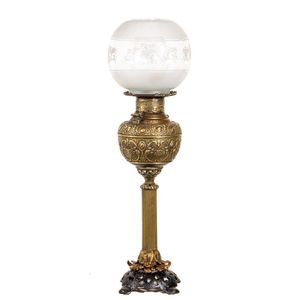
Vintage Miller USA Kerosene Lamp with Shade and Chimney
A Miller USA kerosene lamp with shade and chimney, height 73 cm
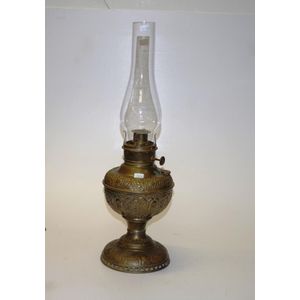
Miller Brass Oil Lamp with Floral Decoration
Miller floral decorated brass oil lamp with funnel, 53 cm height.
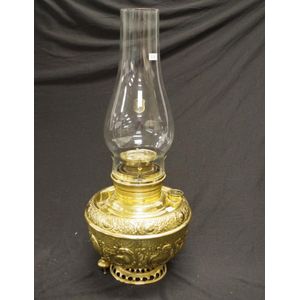
Vintage Miller USA Brass Fuel Lamp with Glass Funnel
Good vintage Miller USA brass fuel lamp embossed decoration to base, marked for 'The Miller lamp, made in USA,' with glass funnel, height 28 cm base only
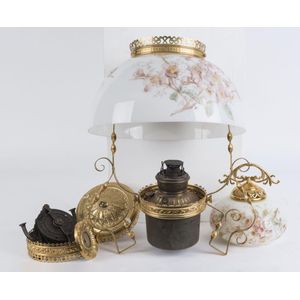
Gilt Metal Miller Parlor Lamp - 19th Century
Miller parlour lamp, gilt metal and glass, 19th century, 85 cm high
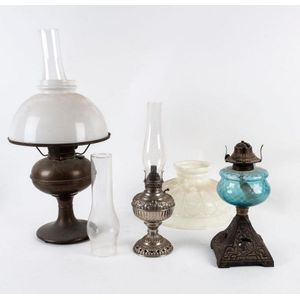
Antique Oil Lamps with Milk Glass Shade and Chimney
Miller Tiny-Juno oil lamp, Miller brass oil lamp and shade, oil lamp with blue font, milk glass shade and chimney, 19th/20th century, the tallest 52 cm high
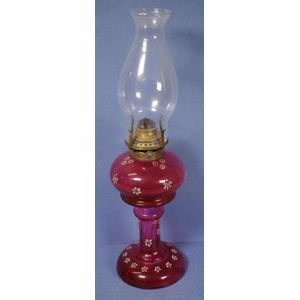
American Cranberry Glass Oil Lamp with E. Miller Co Burner
Antique American cranberry glass oil lamp, with E. Miller Co burner, 49 cm high

Antique Banquet Lamp with Crystal Shade and Conversion, 63cm
Antique Millers table banquet lamp with glass shade and crystals, later conversion, 63 cm high

Embossed Miller Tilley Lamp with Milk Glass Shade
Miller Tilley lamp with early milk glass shade made in the USA, with a brass embossed body, decorated with a symmetrical pattern to mid section and base and fitted with a flume and milk glass shade, height 57 cm

Miller Banquet Lamp with Brass Base and Pink Pedestal
Antique Miller banquet lamp with heavy brass base, pink ceramic pedestal & ornate brass font, 93 cm high approx.

Onyx and Brass Miller Oil Lamp with Etched Shade
An antique Miller oil lamp with brass front & base, onyx column & acid etched green glass shade. 65 cm
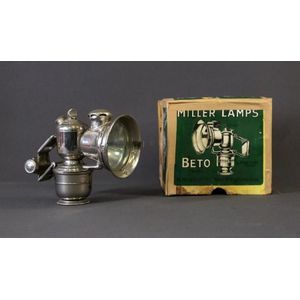
Vintage Miller Beto Cycle Lamp in Original Box
Miller Beto Cycle lamp. in original box. Private collection, Sydney.
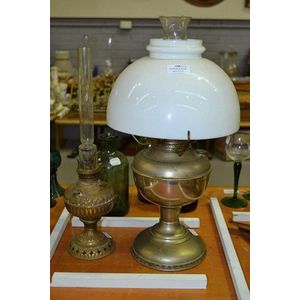
Pair of Brass Miller Oil Lamps
Two brass Millers oil lamps, one The Tiny Juno, approx 40 cm high and 47 cm high (2)
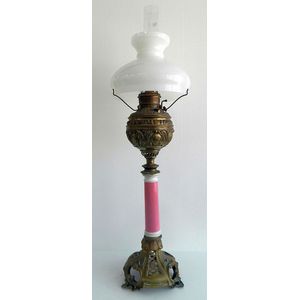
Tall Miller banquet lamp on brass and ceramic base
A tall Miller banquet lamp on a heavy fretwork brass base with four feet, a pink ceramic pedestal trimmed with white, supporting an ornate brass font decorated with a shield pattern, a single round burner and spreader arms supporting a white milk glass…
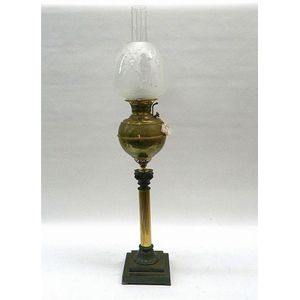
Miller Juno Banquet Oil Lamp with Etched Shade
An American 'Juno' banquet oil lamp, made by Miller c1895 with Corinthian brass column form pedestal supporting globular brass font, fretwork burner and shade with etched classical figures. Height 90 cm
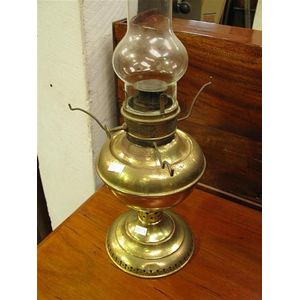
 Loading more...
Loading more...